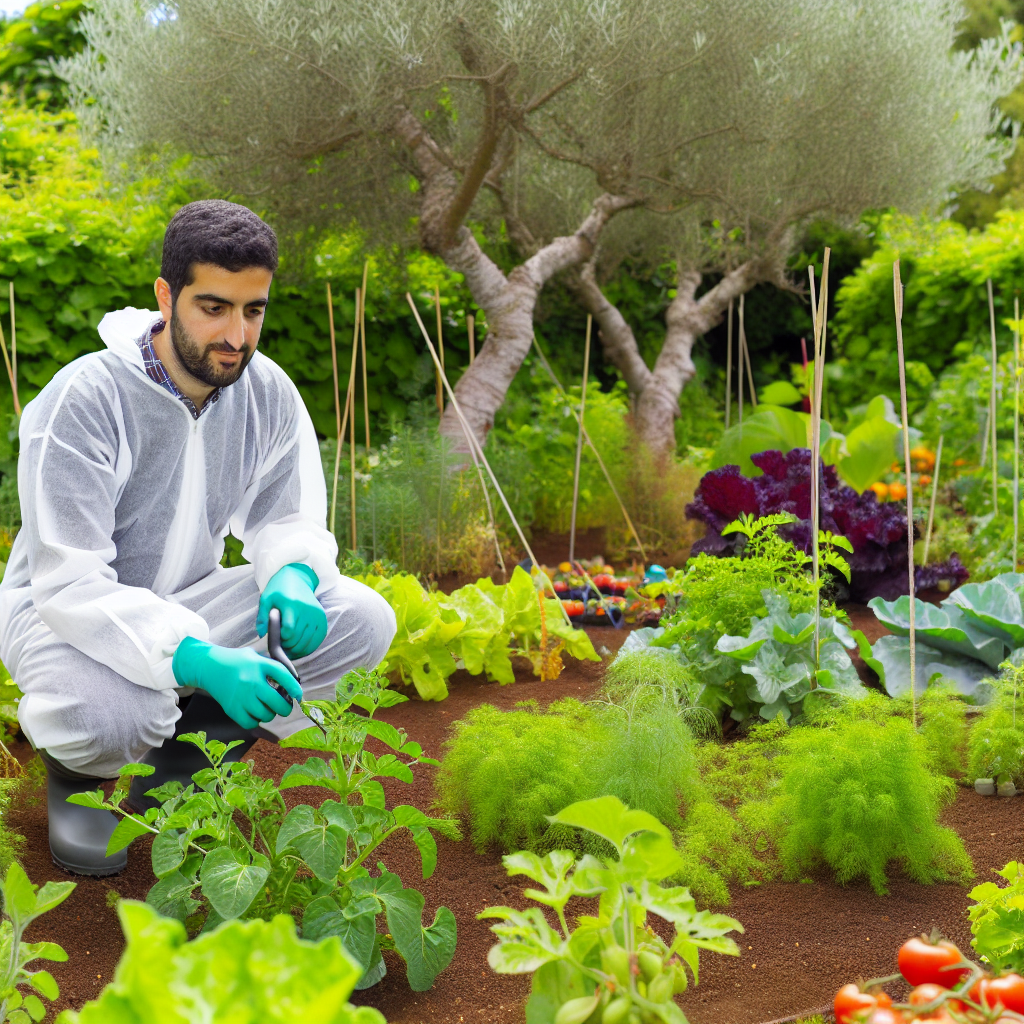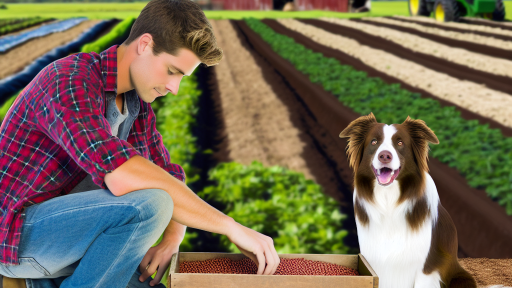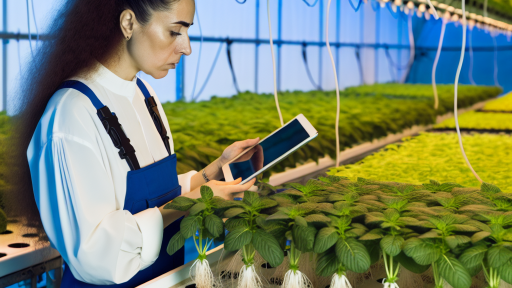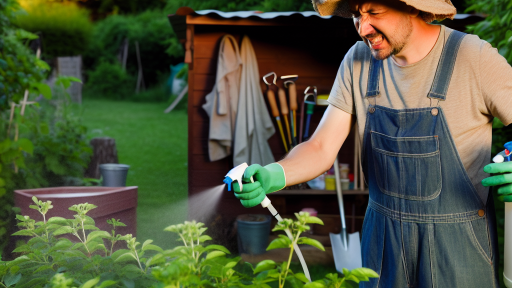Pest Management in Edible Landscaping
Introduction
Pest management is critical in edible landscaping.
Many gardeners face challenges with pests invading their plants.
Effective pest management protects the investment made in gardens.
Understanding Common Pests
Identifying common pests is the first step in effective management.
Common pests include aphids, slugs, and whiteflies.
Aphids suck sap from plants, weakening them over time.
Slugs and snails feed on leaves, leaving unsightly holes.
Whiteflies can spread diseases and affect plant growth.
Importance of Integrated Pest Management
Integrated Pest Management (IPM) combines various strategies.
This approach minimizes risks to human health and the environment.
IPM starts with regular monitoring of the garden.
This practice helps identify pest problems early on.
Managing pests involves cultural, mechanical, and biological controls.
Cultural Controls
Cultural controls focus on altering the environment to prevent pests.
Crop rotation is an effective cultural practice.
Transform Your Agribusiness
Unlock your farm's potential with expert advice tailored to your needs. Get actionable steps that drive real results.
Get StartedThis practice disrupts pest life cycles.
Planting pest-resistant varieties also helps manage issues.
Moreover, maintaining healthy soil promotes plant resilience.
Mechanical Controls
Mechanical controls involve physical barriers and traps.
Using row covers can protect plants from insects.
Handpicking pests is effective for smaller infestations.
Traps can catch snails and slugs effectively.
Keep the garden clean to deter pests from settling.
Biological Controls
Biological controls use natural predators to manage pests.
Ladybugs are effective in controlling aphid populations.
Nematodes can help with soil-borne pests.
Encouraging beneficial insects supports this method.
A diverse garden can attract these helpful creatures.
Chemical Controls
Sometimes, chemical controls are necessary.
Choose organic pesticides to reduce environmental harm.
Always follow label instructions for safe application.
Use chemicals as a last resort after exploring other options.
Monitoring and Evaluation
Regular monitoring helps assess the effectiveness of pest management.
Evaluate the number and type of pests present.
Adjust management strategies based on observed results.
Documenting outcomes supports future decisions.
Importance of Integrated Pest Management in Sustainable Gardening
Understanding Integrated Pest Management
Integrated Pest Management, or IPM, is an effective strategy for managing pests.
This approach combines different management practices and knowledge about pest biology.
It helps minimize the use of harmful chemicals.
Showcase Your Farming Business
Publish your professional farming services profile on our blog for a one-time fee of $200 and reach a dedicated audience of farmers and agribusiness owners.
Publish Your ProfileBenefits of IPM in Sustainable Gardening
Implementing IPM promotes ecological balance in gardening.
It enhances biodiversity while supporting healthy soil ecosystems.
Furthermore, this strategy reduces the risk of crop damage.
Key Components of IPM
- Monitoring pest populations regularly is crucial.
- Identifying pests accurately helps in making informed decisions.
- Using a variety of management techniques is essential.
Techniques Used in IPM
- Cultural practices include rotating crops and proper irrigation.
- Biological controls use natural predators or parasites to manage pests.
- Mechanical controls include traps and physical barriers.
Reducing Chemical Use
IPM emphasizes reducing chemical pesticide use whenever possible.
When chemicals are necessary, IPM promotes using them selectively and responsibly.
This approach protects beneficial organisms and the environment.
Educating Gardeners
Education plays a vital role in successful IPM implementation.
Workshops and resources can help gardeners learn effective strategies.
Knowledge sharing builds a community of sustainable gardening practices.
Common Pests in Edible Landscapes: Identification and Lifecycle
Understanding Common Pests
Edible landscapes attract various pests that can affect plant health.
Identifying these pests early helps in managing them effectively.
Common garden pests include aphids, slugs, and spider mites.
Each pest has unique characteristics that aid in their identification.
For instance, aphids are small, soft-bodied insects often found in clusters.
They may be green, black, or brown, depending on the species.
Aphids
Aphids reproduce rapidly, leading to significant infestations.
They feed on plant sap, weakening the overall plant structure.
Check for aphids under leaves, as they prefer sheltered areas.
The life cycle of an aphid can vary but often includes live birth.
This trait allows them to quickly adapt to environmental conditions.
Slugs
Slugs are primarily nocturnal, feeding on tender plant foliage.
These pests leave a characteristic slimy trail behind them.
Slugs thrive in damp environments, making moist garden areas ideal.
They lay eggs in the soil, usually during warm months.
A single slug can consume a large number of plants in a short time.
Spider Mites
Spider mites are tiny and often go unnoticed until damage occurs.
They cause stippling on leaves, resulting in a speckled appearance.
Look for fine webs on the undersides of leaves, a tell-tale sign.
Spider mites reproduce quickly, making control challenging.
Their lifecycle includes both egg and adult stages, contributing to rapid population growth.
Preventative Measures
Preventative measures can significantly minimize pest problems.
Encouraging beneficial insects can help control pest populations.
Planting diverse species can also deter specific pests.
Regular monitoring of plants aids in early pest detection.
Using organic pesticides can manage infestations effectively.
Monitoring and Management
Consistent monitoring is crucial for effective pest management.
Check plants regularly for signs of pests or damage.
Implementing Integrated Pest Management (IPM) strategies is effective.
IPM focuses on using multiple control methods for sustainable management.
By understanding pest life cycles, you can time interventions appropriately.
Showcase Your Farming Business
Publish your professional farming services profile on our blog for a one-time fee of $200 and reach a dedicated audience of farmers and agribusiness owners.
Publish Your ProfileExplore Further: Overcoming Common Challenges In Container Gardening
Preventive Strategies: Plant Selection and Companion Planting
Choosing the Right Plants
Selecting plants that are resilient to pests is crucial.
Choose native plants that thrive in your local environment.
These plants often have natural defenses against pests.
Additionally, opt for disease-resistant varieties of popular edibles.
Research cultivars that exhibit strong pest resistance.
Remember, healthy plants are less susceptible to infestations.
Understanding Companion Planting
Companion planting enhances pest management within your landscape.
Certain plants deter pests, while others attract beneficial insects.
For example, marigolds repel nematodes and aphids.
Similarly, basil can help protect tomatoes from flies and other pests.
Consider pairing plants with complementary properties.
This method often results in a healthier garden ecosystem.
Creating Diverse Plant Communities
Diversity in plant selection can confuse pest populations.
Plant a mix of species to reduce the risk of widespread infestations.
Utilize vertical spaces to grow a variety of plants together.
Intercropping allows for greater biodiversity and resilience.
Moreover, rotating plants each season can disrupt pest life cycles.
Implementing Natural Barriers
Using physical barriers can also prevent pest access.
Consider row covers or insect netting for vulnerable crops.
Create natural barriers using certain plants that repel pests.
These methods can further safeguard your edible landscape.
Discover More: Sustainable Urban Farming Methods Explained
Cultural Practices to Minimize Pest Infestations
Understanding Pest Dynamics
Pest management begins with understanding pests and their behaviors.
Recognizing the lifecycle of pests can inform effective interventions.
This knowledge allows gardeners to anticipate infestations before they occur.
Monitoring pest populations helps determine when action is necessary.
Regular inspections can identify problems early.
Crop Selection and Diversity
Choosing diverse plant species can deter pests from taking hold.
Interplanting vegetables and flowers creates a balanced ecosystem.
Certain plants repel pests naturally, making them excellent companions.
For example, marigolds can deter nematodes and other unwanted insects.
Additionally, rotating crops reduces the likelihood of soilborne pests.
Soil Health and Management
Healthy soil supports strong plant growth and resilience against pests.
Incorporating organic matter improves soil structure and fertility.
Regular testing ensures nutrient levels promote healthy plants.
A healthy microbial community in the soil aids in pest suppression.
Furthermore, mulching helps retain moisture and suppress weeds.
Water Management
Proper water management prevents stress on plants.
Overwatering can lead to root rot and attract pests.
Showcase Your Farming Business
Publish your professional farming services profile on our blog for a one-time fee of $200 and reach a dedicated audience of farmers and agribusiness owners.
Publish Your ProfileImplementing drip irrigation avoids excessive moisture on foliage.
Consistent watering schedules promote strong, healthy plants.
Additionally, encourage deep root growth to enhance plant vigor.
Encouraging Beneficial Insects
Creating an inviting environment for beneficial insects can curb pest populations.
Planting native flowers provides habitats and food for these allies.
Ladybugs and lacewings help control aphids and other pests.
Building insect hotels can attract pollinators and natural pest predators.
Moreover, avoiding harsh chemicals preserves beneficial insect populations.
Regular Maintenance and Monitoring
Regular maintenance prevents pest issues before they escalate.
Weeding minimizes competition and reduces hiding places for pests.
Trimming dead or diseased foliage enhances overall plant health.
Monitoring for signs of pests, such as chewed leaves, is essential.
Tending to your garden consistently ensures strong environmental control.
Discover More: Hydroponic Systems For City Gardeners
Biological Control: Beneficial Insects and Natural Predators
Introduction to Biological Control
Biological control offers a natural method for pest management.
This method emphasizes using beneficial insects and predators.
It reduces the reliance on chemical pesticides.
Moreover, it helps maintain a balanced ecosystem in edible landscapes.
Benefits of Beneficial Insects
Beneficial insects play a vital role in controlling pest populations.
For instance, ladybugs are effective at eliminating aphids.
Wasps, particularly parasitic varieties, target caterpillars and beetles.
These insects ultimately contribute to healthier plants and improved yields.
Popular Beneficial Insects
- Ladybugs: Known for consuming aphids and soft-bodied insects.
- Predatory mites: Effective against spider mites and thrips.
- Hoverflies: Their larvae feed on aphids, thrips, and whiteflies.
- Parasitic wasps: Help control caterpillar populations by laying eggs in them.
Natural Predators in the Garden
Natural predators also assist in maintaining pest balance.
Birds, for instance, consume a significant number of insects.
Encouraging birds naturally mitigates pest populations.
Additionally, bats are excellent for controlling nocturnal pests.
Creating a Habitat for Beneficial Insects
To attract beneficial insects, consider plant diversity.
Incorporate flowering plants that provide nectar and pollen.
Examples include marigolds, dill, and yarrow.
Also, provide habitats such as insect hotels and undisturbed areas.
Integrating Biological Control with Other Methods
Combining biological control with other pest management strategies is ideal.
For instance, use companion planting to enhance pest resistance.
Furthermore, practice good sanitation to eliminate breeding grounds.
This integrated approach boosts overall pest management results.
See Related Content: Container Gardening Tips For Urban Farmers

Chemical Control Options
Pesticides and Their Responsible Use
Pesticides offer effective solutions for managing pests in edible landscapes.
However, responsible use is crucial for safeguarding health and the environment.
Understanding different types of pesticides helps gardeners make informed choices.
Broadly, pesticides fall into several categories.
- Insecticides target insect pests.
- Herbicides control unwanted plant growth.
- Fungicides combat fungal infections.
- Rodenticides eliminate rodent populations.
Each type of pesticide works differently, so choosing the right one is essential.
Showcase Your Farming Business
Publish your professional farming services profile on our blog for a one-time fee of $200 and reach a dedicated audience of farmers and agribusiness owners.
Publish Your ProfileFor instance, insecticides can come in spray or granule forms.
Sprays work quickly, while granules provide slow release over time.
Selecting Pesticides Wisely
When selecting pesticides, consider the specific pest problem.
Also, assess the potential impact on beneficial insects and pollinators.
Many gardeners favor organic pesticides for their reduced environmental impact.
Examples include neem oil and insecticidal soap.
These options effectively manage pests while remaining safe for non-target species.
Application Techniques
Proper application techniques enhance the effectiveness of pesticides.
Always follow the manufacturer’s instructions for usage rates.
Avoid applying pesticides on windy days to minimize drift.
Use protective gear, such as gloves and masks, when handling chemicals.
Timing is also critical; treating pests early prevents larger infestations.
Regularly monitor your garden for signs of pest activity.
Understanding Environmental Impact
Be aware of pesticides’ potential effects on nearby ecosystems.
Runoff can contaminate water sources, affecting wildlife and plants.
For this reason, choose target-specific products when possible.
Additionally, exploring integrated pest management (IPM) can further reduce reliance on chemical controls.
IPM combines various strategies for long-term pest control solutions.
Monitoring and Assessing Pest Damage
Importance of Monitoring
Regular monitoring helps gardeners catch pest problems early.
It allows for timely interventions before damage escalates.
Additionally, early detection can save plants and resources.
Tools for Monitoring
A variety of tools are available to monitor pest activity.
Start with a simple magnifying glass for close inspections.
Handheld traps can also help catch and identify pests.
Consider using sticky traps to monitor flying insects.
Cameras can document pest conditions visually for further analysis.
Techniques for Assessing Pest Damage
Assessing pest damage includes several effective techniques.
Begin by observing plants regularly for any unusual signs.
Look for discoloration, holes, or wilting leaves as indicators.
Examine the undersides of leaves for hidden pests and eggs.
Documenting Findings
Maintain a log to document pest activities and damage observed.
Record the dates and specific plant types affected.
This information helps identify patterns over time.
Use photographs to visually track changes and issues.
Utilizing Software Applications
Many apps assist in tracking and identifying pests.
Choose an application that allows you to input data easily.
These tools can often provide pest identification and management tips.
Integrating Monitoring into Your Routine
Make monitoring part of your regular gardening tasks.
Dedicate time weekly to inspect your plants thoroughly.
Incorporate monitoring while performing routine care activities.
Showcase Your Farming Business
Publish your professional farming services profile on our blog for a one-time fee of $200 and reach a dedicated audience of farmers and agribusiness owners.
Publish Your ProfileEngage family members to share monitoring responsibilities.
Case Studies: Successful Pest Management in Community Edible Gardens
Introduction to Community Edible Gardens
Community edible gardens empower local residents.
They promote food security and community engagement.
However, pest management remains a significant challenge.
Case Study: The Green Thumb Collective
The Green Thumb Collective implemented integrated pest management (IPM) techniques.
They identified common pests such as aphids and caterpillars.
In response, they used beneficial insects like ladybugs.
This method significantly reduced pest populations.
Additionally, they encouraged strong plant diversity to enhance resilience.
Results of IPM Implementation
The garden reported a 70% decrease in pest-related damage.
Harvest yields increased notably as a result.
Community members learned valuable pest management skills.
Case Study: Urban Harvest Initiative
The Urban Harvest Initiative focused on educational workshops.
They taught participants about organic pest control methods.
They explored options such as neem oil and insecticidal soaps.
Furthermore, the initiative promoted companion planting strategies.
This strategy helped deter pests naturally.
Impact on the Community
Participants reported greater confidence in managing pests.
The community observed increased awareness of sustainable practices.
Additionally, gardens thrived with reduced chemical usage.
Case Study: Sunshine Gardens Alliance
Sunshine Gardens employed community monitoring techniques.
Volunteers conducted regular pest inspections.
They created a pest alert system for immediate action.
As a result, problems were addressed promptly.
Success Metrics
The alliance noted a 50% reduction in pest infestations.
Moreover, the community developed a stronger sense of ownership.
Engagement in the garden increased drastically.
Effective Pest Management Practices
These case studies illustrate effective pest management techniques.
Communities can thrive through education and proactive measures.
Importantly, collective efforts enhance food productivity.
Ultimately, community edible gardens can flourish with proper management.
Additional Resources
North Florida Vegetable Gardening Guide
How Edible Landscaping Will Improve Your Life and The World …




